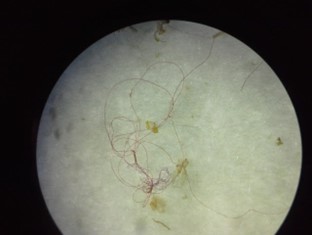Though exact definitions vary, contaminants of emerging concern (CECs) are generally considered to be chemicals or materials that have not been previously detected in water (or that are being detected at significantly different levels than expected), lack a published standard, and have a perceived, potential, or real threat to human health. As such, the occurrence, fate, and transport of CECs is a priority issue for NEIWPCC and our member states.
These contaminants are often the subject of ongoing research and regulations. Below are examples of what NEIWPCC member states are doing to address CECs and prioritize public health:
Contaminants of Emerging Concern workgroup
NEIWPCC’s Contaminants of Emerging Concern workgroup brings together New England and New York state agencies, the Environmental Protection Agency, and academic institutions from around the region to address the issue of CECs in our waterways.
For more information on the workgroup, contact Ian Dulin.
Select CECs that NEIWPCC and our member states are focusing on:
PFAS
Per- and polyfluoroalkyl substances (PFAS) are a group of synthetic chemicals used to make coatings and products that resist heat, oil, stains, grease, and water. They can be found in thousands of products and applications, and are very resistant to degradation. Due to their persistence in nature, they easily move through air, soil, and water, and can bioaccumulate.
In April 2024, the EPA issued its final PFAS National Primary Drinking Water Regulation for six PFAS compounds. The rule established legally enforceable levels, called Maximum Contaminant Levels (MCLs), for six PFAS in drinking water. It also established monitoring guidelines for public water systems, which will have three years to sample for PFAS to establish existing levels, and an additional two years to install treatment technologies if they exceed the MCLs.
PFAS have been the subject of many high-profile instances of emerging contaminants affecting water resources. As a result, several of NEIWPCC’s member states have led the way in research and regulation.
View New Hampshire’s PFAS Response website.
Microplastics
Microplastics are small particles of plastic, defined as being less than 5 millimeters in length. They are derived from commercial product development and the degradation of larger plastics. Like all plastics, microplastics take a very long time to break down in the environment and can therefore accumulate on beaches, in waterways, and in living organisms.

The presence of microplastics in the natural world is widespread. They have been found in fish, bivalves, birds, mammals, plankton, coral, and plants. While the effects of consuming microplastics are still being studied, there is evidence that organisms that consume a higher ratio of microplastics experience nutrient deficiencies. Additionally, a plethora of studies have linked the consumption of microplastics with adverse health effects.
The issue is further complicated as the wide range of particle size, composition, and density make it difficult for researchers and regulators to broadly characterize microplastics. Some sources of microplastics, such as microbeads commonly found in rinse-off cosmetics, have been regulated in states like Connecticut. The issue, however, remains pervasive.
In the meantime, one of the easiest means of curtailing the issue is to reduce our use of plastics, particularly single-use plastics.
1,4-Dioxane
1,4-Dioxane is a synthetic industrial chemical used as a stabilizer for chlorinated solvents. It can be found in many consumer products including shampoo, soap, skin cleanser, laundry detergent, adhesives, and antifreeze. The EPA has classified 1,4-Dioxane as a likely human carcinogen.
1,4-Dioxane is highly mobile in the environment, and is long-lived in water, meaning that while the use of the chemical has dropped in recent years, its presence persists. Currently, no federal maximum contaminant level (MCL) has been established for 1,4-Dioxane in drinking water. However, many states including Massachusetts and New York have enacted legislation to regulate the use of, and establish drinking water guidelines for, 1,4-Dioxane.
View the EPA technical fact sheet for 1,4-Dioxane.
6PPD-q
6PPD is an anti-degradant added to tires to extend product life by preventing breakdown related to exposure to ozone. When 6PPD reacts with ozone, it forms 6PPD-quinone (6PPD-q). 6PPD-q is typically deposited on road surfaces and enters water bodies via runoff.
While the impacts of 6PPD-q are still be examined, a 2021 study attributed coho salmon death with 6PPD-q from stormwater runoff. The issue has become elevated in the Pacific Northwest, as salmon populations are not only an important industry, but are also deeply engrained in the culture.
Green infrastructure solutions, such as stormwater ponds and buffer zones, as well as increased street sweeping have been identified as practices which could reduce 6PPD-q pollution. Additionally, states like Washington have introduced legislation that would help protect salmon populations from 6PPD-q. Finally, the EPA recently agreed with a petition submitted by several tribal nations, and supported by states including Connecticut, Vermont, and Rhode Island, that would initiate risk management rulemaking under the Toxic Substances Control Act “to address risk to the environment from 6PPD-quinone, a degradant of 6PPD.”
View resources on 6PPD-q compiled by the Washington State Department of Ecology.
